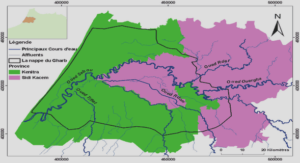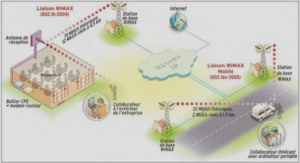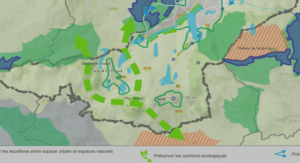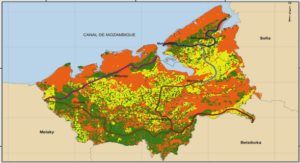Sommaire: Elaboration of electronic conductor composite materials (study of physical and electronic properties)
General introduction
Chapter 1-Literature Review
1.1. Introduction
1.2. Telechelic polyisoprene
1.2.1. Definition
1.2.2. Synthesis methods of telechelic polyisoprene
1.2.2.1. Oxidation in the presence of redox system
1.2.2.2. Oxidation by photochemical method
1.2.2.3. Oxidation at high temperatures and high pressures
1.2.2.4. Oxidation by cleavage reagent specific to double bonds
1.2.2.5. Metathesis degradation
1.3. Polyurethanes (PUs)
1.3.1. Classification of polyurethanes
1.3.1.1. Foams
1.3.1.2. Solid polyurethanes
1.3.2. Method of synthesis of polyurethanes
1.3.2.1. Classic method of polyurethane synthesis using isocyanates
1.3.2.2. Synthesis of polyurethane by pathways without isocyanate
1.3.2. Application of polyurethanes
1.4. Ionic liquids
1.4.1. Definition and properties of ionic liquids
1.4.2. Applications of ionic liquids
1.4.2.1. Used in organic synthesis
1.4.2.2. Biotransformations in Ionic Liquids
1.4.2.3. Use of Ionic Liquids in MALDI mass spectroscopy
1.4.2.4. Use of Ionic Liquids in materials chemistry
1.5. Polymer electrolytes and conducting polymers
1.5.1. Polymer electrolytes
1.5.1.1. Types of polyelectrolyte
1.5.1.2. Polyurethane based polyelectrolytes
1.5.1.3. Polyelectrolyte from rubber.
1.5.2. Conducting polymers composites
1.5.2.1. Synthesis methods of conducting composites
1.5.2.2. Polyurethane based conducting polymers
1.5.2.3. Conducting composite polymers from rubber
1.6. Conclusion
Chapter 2-Synthesis and characterization of telechelic cis-1,4-polyisoprene
2.1. Introduction
2.2. Oxidative degradation of cis-1,4-polyisoprene
2.2.1. Epoxidation of cis-1,4-polyisoprene
2.2.2. Cleavage of epoxidized cis-1,4-polyisoprene 2 in organic meduim
2.3. Synthesis and characterization of hydroxytelechelic polyisoprene precursor of polyurethane
2.4. Modification of hydroxytelechelic cis-1,4-polyisoprene precursor of polyurethanes
2.4.1. Hydrogenation of hydroxytelechelic cis-1,4-polyisoprene 4
2.4.2. Epoxidation of hydroxytelechelic cis-1,4-polyisoprene 4
2.5. Synthesis and characterization of aminotelechelic cis-1,4-polyisoprene precursor of polyurea
2.6. Epoxidation of aminotelechelic polyisoprene polyurea precursor
2.7. Conclusion
Chapter 3- Synthesis and characterization of polyurethane based conducting composites
3.1. Introduction
3.2. Ionic liquid incorporated polyurethanes
3.2.1. Synthesis of linear and crosslinked ionic liquid incorporated polyurethanes
3.2.1.1. [bmim]PF incorporated polyurethane films
3.2.1.2. [thtdp]Cl incorporated polyurethane films
3.2.2. Thermal properties of ionic liquid incorporated polyurethane films
3.2.2.1. Thermal properties of polyurethane films without ionic liquids
3.2.2.1. Thermal properties of [bmim]PF incorporated polyurethane films
3.2.2.2. Thermal properties of [thtdp]Cl incorporated polyurethane films
3.2.3. Conductivity measurement of ionic liquid incorporated polyurethane films.
3.2.3.1. Conductivity measurement of polyurethane films without ionic liquids
3.2.3.2. Conductivity measurement of [bmim]PF incorporated polyurethane films.
3.2.3.3. Conductivity measurement of [thtdp]Cl incorporated polyurethane films
3.3. Ionic liquid incorporated polyureas
3.3.1. Synthesis of linear and crosslinked ionic liquid incorporated polyureas
3.3.2. Thermal properties of ionic incorporated polyurea films
3.3.3. Conductivity measurement of ionic liquid incorporated polyurea films
3.4. Polymerisation of conducting polymers on polyurethane films
3.4.1. Chemical polymerization of aniline on polyurethane films and characterization of films
3.4.2. Electropolymerization of aniline on polyurethane films.
3.4.2.1. Electropolymerization of aniline on polyurethane coated electrode
3.4.2.2. Electropolymerization of aniline on polyurethane casting films .
3.4.2.3. Electropolymerization of aniline on polyurethane thin film on ITO plate .
3.4.2.4. Electropolymerization of EDOT and Py on polyurethane film
3.5. Conclusion
Chapter4- Synthesis and properties of polyurethane using chain extender with pyrrole side group
4.1. Introduction
4.2. Synthesis and characterization of new chain extender with pyrrole side group
4.2.1. Synthesis of 1-(3-bromopropyl)-1H-pyrrole 9
4.2.2. Synthesis of diethyl 2-(3-(1H-pyrrol-1-yl)propyl)malonate 10.
4.2.3. Synthesis of 2-(3-(1H-pyrrol-1-yl)propyl)propane-1,3-diol 11
4.3. Synthesis and properties of polyurethanes using 2-(3-(1H-pyrrol-1-yl)propyl)propane1,3-diol as chain extender
4.3.1. Linear polyurethane with different amounts of chain extender.
4.3.1.1. Thermal properties of linear polyurethanes with chain extender
4.3.2. Crosslinked polyurethanes with different amounts of chain extender.
4.3.2.1. Thermal properties of crosslinked polyurethanes with chain extender
4.4. Electrochemical polymerization of pyrrole on polyurethane films.
4.4.1. Electrochemical polymerization of pyrrole on pyrrole-swollen polyurethane films containing chain extender.
4.4.2. Electrochemical polymerization of pyrrole on polyurethane films containing chain extender.
4.5. Conclusion
General conclusion
Experimental part
Appendix
Extrait du mémoire Elaboration of electronic conductor composite materials (study of physical and electronic properties)
Chapter 1-Literature Review
1.1. Introduction
According to our framework, we played attention to elaborate materials from the renewable resource, such as natural rubber. Thus, the literature survey of concerning works was done.
In this chapter, firstly, various strategies for preparation of precursors, called telechelic oligomers, from high molecular weight natural and synthetic rubbers via controlled degradation feature are described.
Secondly, due to aim of our study being synthesis of polyurethane based conducting composites, hence, polyurethane types, mode of preparation including starting materials and their applications are then defined. Subsequently, the important role of Ionic Liquids, the new generation salts, is demonstrated in the recent researchs as well as in material chemistry. Their structure, unique properties and applications in many areas are expressed, particularly in polyelectrolytes.
Finally, we write about the polyelectrolytes and conducting composites. Types of polyelectrolytes, also ionic liquids incorporated polyelectrolytes, the preparation of polymer conducting composites, especially the employment of polyurethane and elastomers as polyelectrolytes and conducting matrix are represented.
1.2.Telechelic polyisoprene
1.2.1. Definition
The term ‘telechelic’ was proposed originally by Uraneck, Hsieh and Buck for low molecular weight polymers bearing two functional end groups. Nowadays, this term is also applied to oligomers having two or more terminal groups [1].
Telechelic liquid natural rubber (TLNR) can be defined as a low molecular weight oligomer having number average molecular weight approximately 100-10000 and containing reactive terminal groups capable for using in further chain extension and crosslinking. TLNR still consists of isoprene units, basic structure of natural rubber (NR). The main difference from NR is that TLNR has reactive groups at the chain end, as donated by X and Y. X and Y may, or may not, be similar.
………..
![]() Si le lien ne fonctionne pas correctement, veuillez nous contacter (mentionner le lien dans votre message)
Si le lien ne fonctionne pas correctement, veuillez nous contacter (mentionner le lien dans votre message)
Mémoire Online: Elaboration of electronic conductor composite materials (study of physical and electronic properties) (11.42 MB) (Cours PDF)
![]()






